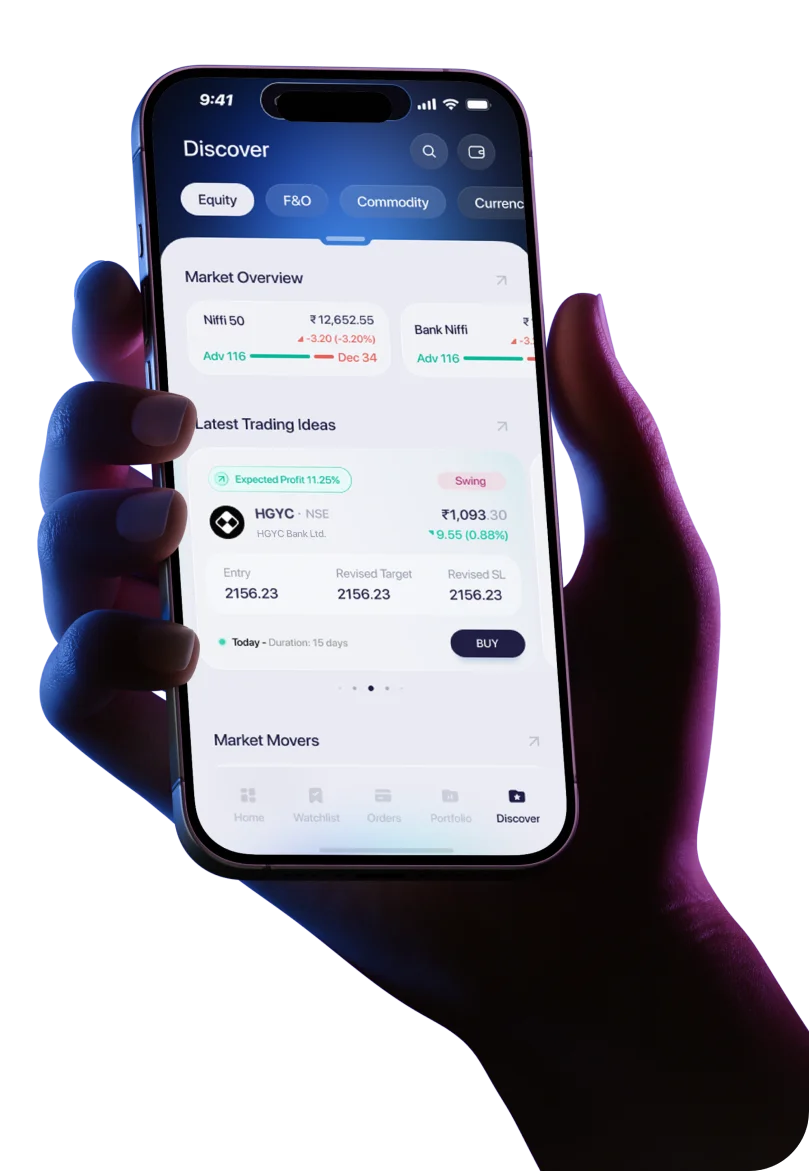Introduction
Every year, the Indian stock markets reserve a special hour during Diwali for Muhurat Trading a symbolic gesture to usher in prosperity, auspicious beginnings, and renewed investor confidence for the year ahead. Rooted in centuries-old cultural traditions, this session blends ritual with capital markets, making it a singular event in India’s financial calendar. Over time, what began as token trades by families and brokers has evolved into a moment watched by modern investors and institutions alike.
In 2025, the Muhurat Trading session carries additional interest: for the first time in many decades, the timing has shifted from the familiar evening slot to an afternoon window. As India enters Samvat 2082 (but many still refer to such sessions in the context of the outgoing Samvat count for tradition), this shift is operationally and symbolically significant. In this article, we’ll dissect the meaning of Muhurat Trading, the specifics for 2025, the rationale and implications for the timing change, and guidance on participating prudently in this festive trading opportunity.
What is Muhurat Trading?
Muhurat Trading is a special, one-hour trading session held on the day of Diwali (Laxmi Pujan) in India’s equity markets. It is intended as a ritualistic start to the Hindu financial new year, aligning with the onset of the Vikram Samvat calendar for many traders and business communities. Exchanges such as BSE and NSE suspend regular trading for the day but open for this specially designated window.
From a cultural standpoint, Muhurat Trading is considered an auspicious time: many believe that trades executed during this hour bring luck, prosperity, and positive returns throughout the year. Historically, business houses would perform Chopda Pujan (worship of account books) and make their first trades or symbolic purchases during this hour.
Financially, while markets treat it as a real trading session (with settlement obligations, order books, etc.), the volume is often lower, directionality can be subdued, and many participants treat their transactions as symbolic or long-term allocations rather than speculative bets.
In 2022, the Muhurat Trading session on Diwali marked the beginning of Samvat 2079. Over subsequent years, Muhurat Trading has also become a barometer of investor sentiment whether the crowd enters with optimism or caution is often retrospectively linked to yearly market trends.
Muhurat Trading 2025: Date and Timings
Here are the confirmed details for Muhurat Trading 2025:
Date: Tuesday, 21 October 2025
Pre-Open Session: 1:30 PM to 1:45 PM
Main Trading Window: 1:45 PM to 2:45 PM IST
Block Deal / Call Auction & Additional Phases:
• Block Deal Session: 1:15 PM to 1:30 PM
• Closing Session: 2:55 PM to 3:05 PM
• Trade Modification/Cut-Off Window: ends by 3:15 PM
A few observations:
The shift to afternoon hours (1:45 PM to 2:45 PM) is a departure from past practice, where Muhurat Trading generally took place in the evening.
Exchanges have tailored ancillary sessions (block deals, auctions, post-session modifications) to fit within this compressed window.
The shift implies that normal trading on Diwali will remain suspended, with this session being the only window for equity activity.
Investors should note carefully these timings, especially because they deviate from conventional expectations.
Historical Shift in Trading Times
Why the change?
Muhurat Trading traditionally occurred in the evening, often around 6:00 PM to 7:00 PM or thereabouts. The 2025 shift to early afternoon is unprecedented in modern memory and represents the first time in perhaps decades that the session will not align with evening hours.
Possible reasons for this change include:
Operational and regulatory convenience: Afternoon scheduling may reduce logistical burdens and simplify interfacing with regular exchange systems, staff operations, clearing, and settlement processes.
Investor convenience: Afternoon hours may reduce conflicts with evening personal or festive obligations and might make participation easier for those adhering to Diwali rituals later in the day.
Global / NRI alignment: An earlier session may make it easier for Non-Resident Indians (NRIs) or foreign portfolio investors to participate, offering overlap with their time zones or reducing night-time market operations.
Calendar / astrological alignment: The timing might better align with auspicious muhurats derived from astrological calendars for Diwali, especially if the prescribed "Shubh Muhurat" falls earlier in the day. This could be tied into the Vikram Samvat and ritual timings observed in certain regions.
Implications of the shift
Market participation: Investors accustomed to evening participation will need to adjust planning and systems (order placement, broker availability). Some might be excluded if they prioritize evening rituals or commitments.
Liquidity and volatility: A shift in timing injects uncertainty. Afternoon trading may see different liquidity profiles (overlapping with regular sessions earlier), and volatility may behave differently compared to past evening windows.
NRI / global investor access: The shift might facilitate better engagement by NRIs (e.g. in Europe, US), who otherwise found evening India sessions inconvenient or outside their trading day. The earlier window might open up access to those in U.S. Eastern / Western Europe time zones during overlapping hours.
Symbolic alignment: By moving the session earlier, exchanges may be signaling modernization and flexibility, balancing tradition with contemporary market operations.
Overall, the change is a bold experiment how markets, participants, and sentiment respond will be closely watched and could shape future Muhurat Trading norms.
How to Participate in Muhurat Trading
As an equity research analyst guiding your clientele, here’s how readers/investors should approach Muhurat Trading 2025:
Ensure you have an active Demat + Trading account well in advance
This is standard, but worth reiterating especially for investors new to the ritual.
Confirm with your broker that your account is enabled for special Muhurat session filings.
Check broker and exchange circulars nearer to the date
Though the broad timings are announced, brokers may issue instructions (e.g. order cut-off times, pre-registration) closer to the event.
Some brokers may require special forms or acknowledgments for the session.
Pre-select a basket of stocks ahead of time
Given the short window, investors should pre-identify stocks (perhaps 2–5 names) with conviction, fundamentals, and liquidity.
Avoid browsing at the last minute — speed matters.
Place orders during the specified windows
Orders can be inserted in the pre-open session window (1:30 PM–1:45 PM) to get equilibrium price discovery.
The actual trading window (1:45 PM–2:45 PM) is when matching occurs.
Modifications or cancellations might be allowed until the trade modification cut-off (around 3:15 PM) depending on exchange rules.
Mind settlement obligations
All trades executed in this session will have normal settlement obligations.
Do not assume it is a “freebie” session financial discipline must hold.
For first-time participants
Treat trades as symbolic or strategic long-term allocations rather than aggressive intraday bets.
Use limit orders (rather than market orders) to manage execution risk given potential volatility.
Avoid over-leveraging the one-hour window is constrained, and slippage may be high.
By preparing in advance and proceeding with discipline, investors can participate meaningfully without undue risk.
Best Practices for Muhurat Trading
To make the most of the Muhurat session:
Pick stocks with strong fundamentals
Favor large-cap or blue-chip names with adequate liquidity, stable earnings histories, and reasonable valuations. Avoid hyper-volatile, illiquid mid/small caps unless you have conviction and risk appetite.
Adopt a long-term approach
The spirit of Muhurat is not meant for speculative flurry. Ideally, trades placed during this session should be held for weeks or months to benefit from compounding and positive sentiment over time.
Use limit orders, not market orders
In a compressed session with potential volatility, limit orders help you control execution price avoid knee-jerk market orders.
Set stop-loss or trailing stop levels
Though many view this session as auspicious, market dynamics still prevail. Protect against adverse swings.
Stay cognizant of spreads and liquidity
Even in large stocks, bid-ask spreads may widen temporarily be cautious of slippage, especially for large orders.
Don’t over-concentrate
Avoid putting too much capital into one single stock diversification (even across 2–3 names) helps buffer risk.
Keep cash buffer / liquidity ready
Funds should already be comfortably in your account (settled) to avoid payment or margin issues during that hour.
By combining ritualistic enthusiasm with investment discipline, participants can turn the symbolic hour into meaningful portfolio action.
Significance of Muhurat Trading
Muhurat Trading lies at the intersection of culture, finance, and investor psychology. Its significance can be viewed on multiple axes:
Cultural / Spiritual Significance
In the Hindu tradition, Diwali marks the triumph of light over darkness, and traders use this day to invoke prosperity and wealth. Executing a trade during the Muhurat is seen as aligning one’s financial journey with cosmic auspiciousness a ritualistic invocation of success. The session embodies tradition from lighting diyas in broker offices to performing Chopda Pujan before placing orders.
Symbol of New Beginnings
Just as Chaturmas ends and new ventures commence, Muhurat Trading signifies a “new financial year” in the investor’s mind. It offers a psychological reset a moment to recommit capital, adjust portfolios, and set intentions for the year ahead.
Credibility & Market Confidence
The fact that major exchanges suspend regular trade but allow this slot underlines the respect for tradition in India’s capital markets. Participants often see this session as a barometer of investor sentiment: a bullish Muhurat session can instill confidence, while tepid activity may reflect caution.
Fostering Participation
Many retail investors (especially first-time ones) see Muhurat Trading as a low-stakes entry point symbolic trades, small amounts, and a supportive community mood help reduce barriers. Over time, such cultural touchpoints broaden market participation.
Thus, beyond the one hour on Diwali, Muhurat Trading plays a role in sustaining investor engagement, blending belief and finance in India’s capital markets.
FAQs
Can NRIs participate in Muhurat Trading?
Yes NRIs with active equity trading accounts in India can participate, provided their brokers allow order placement and settlement during the session. The shift to afternoon hours may, in fact, make participation more convenient for many overseas investors.
Is intraday trading allowed during this session?
Yes intraday (buy and sell within session) is permitted, just like regular trading. However, due to the short span and episodic liquidity, many choose to hold trades for longer than a few minutes.
How does the change in trading times affect market dynamics?
The earlier window may alter liquidity patterns (overlap with daytime trading) and participation mix (some evening-only traders may sit out; global participants may join). It is possible volatility behaves differently compared to past evening sessions the directional biases and spreads could shift.
Conclusion
Muhurat Trading 2025 on Tuesday, 21 October, from 1:45 PM to 2:45 PM IST marks a pivotal moment: tradition meets transformation. With its shift away from evening hours, the session invites new dynamics, participant behavior, and operational patterns. Yet, its core remains unchanged a symbolic beginning, a nod to prosperity, and a ritual embraced by India’s investors.
To make the most of Muhurat Trading 2025, plan ahead, choose quality names, use disciplined orders, and view your trade as the seed of long-term capital growth rather than a quick gamble. Whether you are a first-time participant or seasoned investor, this hour offers both meaning and opportunity.
For those looking for a seamless trading experience, Samco offers robust trading platforms, research support, and quick execution capabilities ideal companions as you step into Samvat 2082 with conviction.
Wishing all investors a prosperous and strategic Muhurat Trading session!




 Easy & quick
Easy & quick
Leave A Comment?